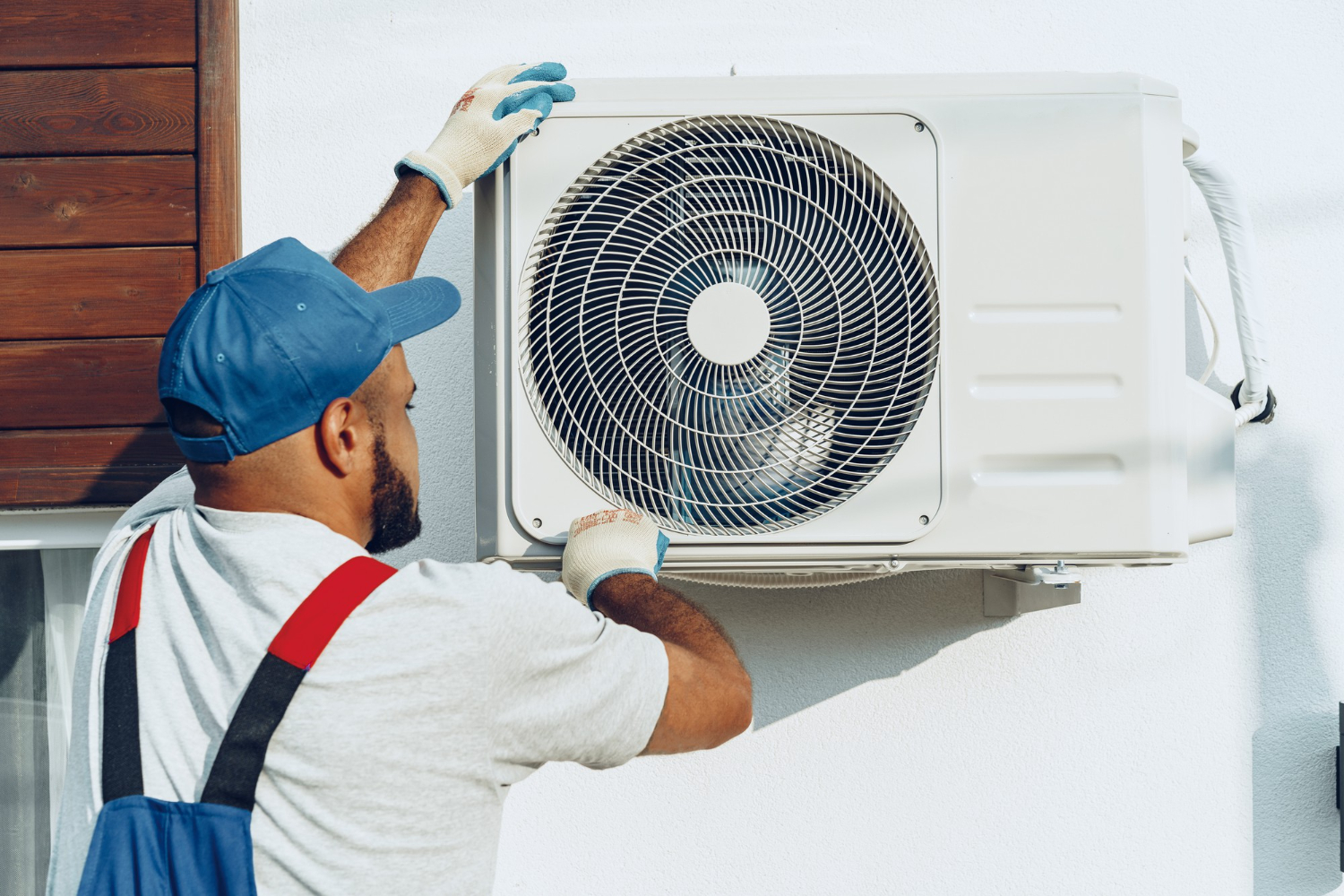In Edmonton, where winter temperatures can drop significantly, heat pumps serve as vital allies in keeping homes warm and comfortable. While these systems are efficient, ice buildup can cause them to work less effectively. Understanding this common issue allows you to address it promptly, ensuring your home remains cozy throughout the cold months.
Ice buildup on a heat pump can lead to reduced efficiency, higher energy bills, or even system damage if left unchecked. This buildup primarily occurs during colder months when ice can form on the outdoor unit, hindering its operation. Addressing ice formation quickly is crucial to maintaining an efficient system and avoiding unnecessary wear and tear. Recognizing the causes and symptoms of ice buildup can help you take timely actions to resolve these issues.
Causes of Ice Buildup on Heat Pumps
Understanding why ice forms on heat pumps is key to preventing and addressing this problem. Several common factors contribute to ice buildup:
– Blocked Airflow: Heat pumps require clear airflow to function correctly. Debris, snow, or even fallen leaves can obstruct the airflow, causing the outdoor coils to become too cold and form ice.
– Refrigerant Issues: Low refrigerant levels can result in the coils not heating adequately, leading to ice formation. This issue often requires professional attention to fix.
– Dirty Coils: Dust and grime on the coils can trap moisture, which then freezes. Regular cleaning is essential to keep the coils free from dirt that can trap moisture.
Edmonton’s weather conditions can exacerbate these issues. The cold and moisture in the air provide an environment where ice can easily form on the heat pump’s components. Thus, regular maintenance and inspections can significantly reduce the chances of ice buildup.
Signs of Ice Buildup on Your Heat Pump
To prevent extensive damage, it’s important to recognize the signs of ice buildup. These indicators suggest that the system may not be functioning optimally:
– Visible frost or ice on the outdoor unit, notably on the coils and pipes, is the most apparent sign. If you notice this, it’s time to take action.
– Reduced airflow from the vents inside your home. This could indicate the outdoor unit is not running efficiently because of ice.
– Unusual noises coming from the unit, like grinding or increased whirring, can be a sign of stress on the system.
These signs can sometimes be subtle, but over time they indicate that the system needs attention. Addressing these issues early can prevent more serious problems from developing and ensure that your heat pump continues to provide warmth efficiently.
Safe Methods to Clear Ice Buildup
If you detect ice on your heat pump, addressing it safely is critical to preventing damage to the unit and ensuring continued efficiency. Follow these steps to manage ice buildup effectively:
1. Turn off the heat pump. This gives it a chance to defrost naturally. Simply switch the system to the “off” position and allow it a few hours to defrost on its own.
2. Remove debris and ensure good airflow. Check around the unit to clear any obstructions like snow or leaves. Maintaining clear surroundings helps the heat pump operate without disruptions.
3. Use warm water. Pouring lukewarm water over the coils can gently melt the ice. Avoid using hot water as it can cause thermal shock and damage the components.
4. Dry the unit with care. After the ice has melted, you can use a hairdryer on a low setting to remove any residual moisture. This helps prevent the newly cleared area from freezing again.
It’s important not to use sharp objects to chip away the ice; doing so risks damaging the coils and other sensitive parts of the heat pump.
When to Call Professionals
Some situations with ice buildup might require more than a do-it-yourself solution. Consider reaching out to our professionals in the following cases:
– Persistent ice that returns soon after removal, which can indicate an underlying issue such as malfunctioning defrost controls.
– Damage is suspected in the coils or other components when ice can’t be removed without the risk of further harm.
– Low refrigerant levels, as only certified technicians should handle refrigerant issues or recharging.
Our technicians possess the skills and tools required to inspect, diagnose, and repair any issues. This ensures the heat pump resumes optimal performance.
Summary of Preventative Measures
Taking proactive steps can significantly reduce the risk of ice buildup on your heat pump. Here are some key practices to keep in mind:
– Schedule regular maintenance. Ensure your heat pump is checked bi-annually to address routine wear and tear.
– Keep the area clear. Regularly remove debris such as leaves, snow, and other potential airflow blockers.
– Monitor refrigerant levels. Ensuring proper levels helps the heat pump maintain efficiency without ice forming on the coils.
By following these simple preventive strategies, you can keep your heat pump running smoothly during the harsh Edmonton winters.
Ensuring Efficient Heat Pump Operation in Edmonton
Properly maintaining your heat pump is key to ensuring comfort for you and your family during Edmonton’s challenging winter months. By taking the correct steps to prevent and address ice buildup, you can maintain a reliable heating source and potentially save on energy costs. When issues arise that call for expert intervention, our professionals stand ready to provide prompt and effective service. Through regular upkeep and vigilance, your heat pump will continue to serve as a dependable home heating solution.
If your heat pump struggles amid the winter chill, consider scheduling a service for reliable heat pump repair in Edmonton. Mobil Heating & Air Conditioning Inc understands the challenges homeowners face with ice buildup and related issues during harsh winters in Edmonton. For a quick estimate or to book a service visit, please contact us today.

